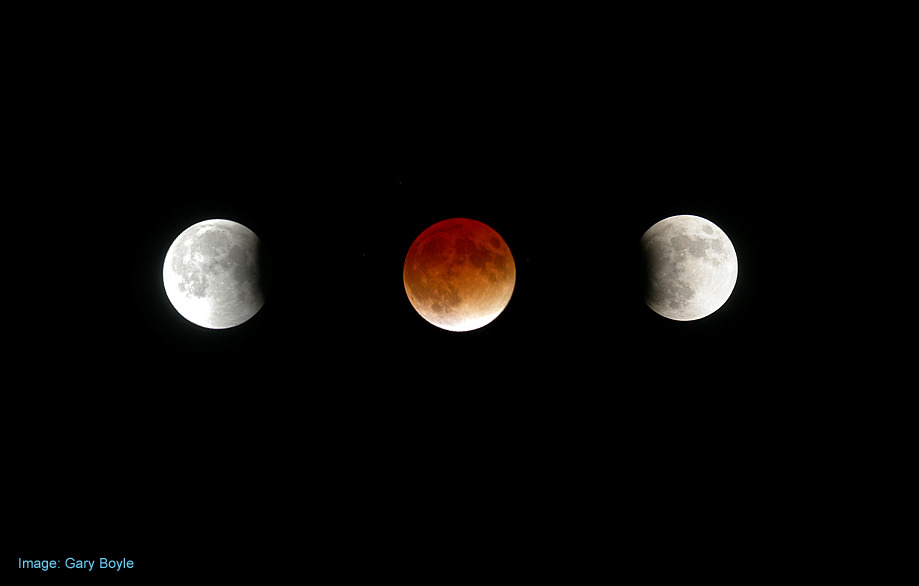Here Comes The Lunar Eclipse
Nothing is more magical than viewing a lunar eclipse. A few times each year, the full moon steps into the earth’s shadow for a few hours, leaving us with lasting memories. Such an eclipse will take place on the night of Nov 18/19 with the Full Beaver Moon. This one will be extra special and appear very close to a total eclipse. Because of the geometry, the moon will be in the larger shadow of the earth except for a mere three percent, leaving the edge in sunlight. A lunar eclipse is very safe to enjoy.
Even though it is not officially proclaimed total, the lunar surface will still exhibit darkness and some colour as typically seen in a total event. People commonly referred to this type of eclipse as a “blood moon”. If you were on the moon at the centre of the shadow during the mid-point of this eclipse, you would see an orange ring around the earth. From this vantage point, you would see sunlight refracting through our atmosphere, witnessing every sunset on the left side of the earth along with every sunrise on the right side at the same time.

For astrophotographers, the moon will be located amongst the bright winter constellations of Orion the Hunter, Taurus the Bull and not too far from the Pleiades star cluster. The only drawback is its late hour. All times are local.
| Start | Mid-eclipse | End | |
|---|---|---|---|
| Atlantic Time | 3:48 a.m. | 5:32 a.m. | 7:17 a.m. |
| Eastern Time | 2:18 a.m. | 4:02 a.m. | 5:47 a.m. |
| Central Time | 1:18 a.m. | 3:02 a.m. | 4:47 a.m. |
| Mountain Time | 12:18 a.m. | 2:02 a.m. | 3:47 a.m. |
| Pacific Time (Nov 18) | 11:18 p.m. | 1:02 a.m. | 2:47 a.m. |
A nice photo op occurs low in the west on November 7 with the 13% crescent moon to the right of brilliant Venus. You should still see earthshine or the DaVinci glow on the unlit side of the lunar surface. Over the next two weeks, follow Venus as it passes through the “teapot” of Sagittarius. The moon can also be found below and left of Saturn on November 10 and below bright Jupiter the night after.
The Leonid Meteor shower peaks on the night of November 17/18, producing about 15 meteors per hour under near full moon conditions. The parent comet 55P/Tempel-Tuttle has produced some vivid meteor storms such as in 1833 when the rate was 72,000 per hour. That equals 20 meteors lighting up the sky per second. The comet returns every 33 years. It will be many years until we see another storm.
Sunday, November 7 marks the end of Daylight Saving Time. Be sure to turn your clocks back at 2 a.m. where applicable. This month’s new moon occurs on November 5.
Until next month, clear skies.
